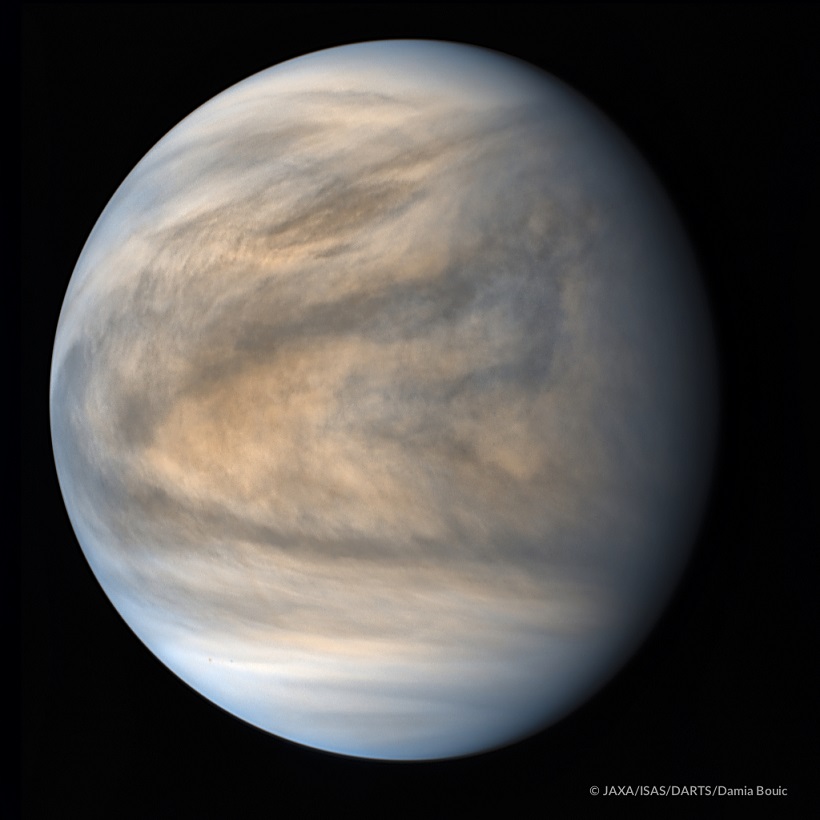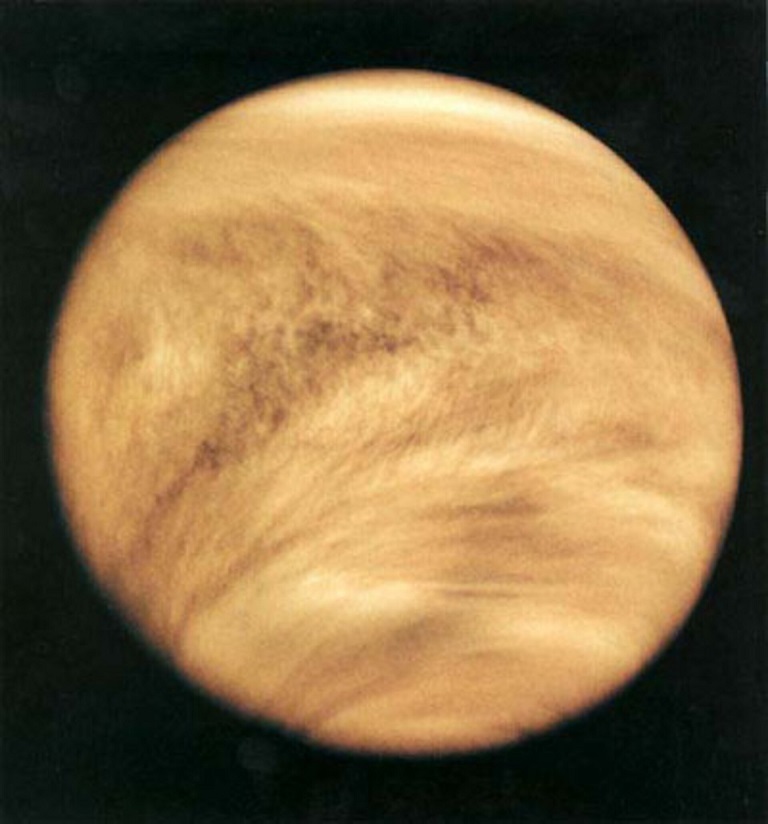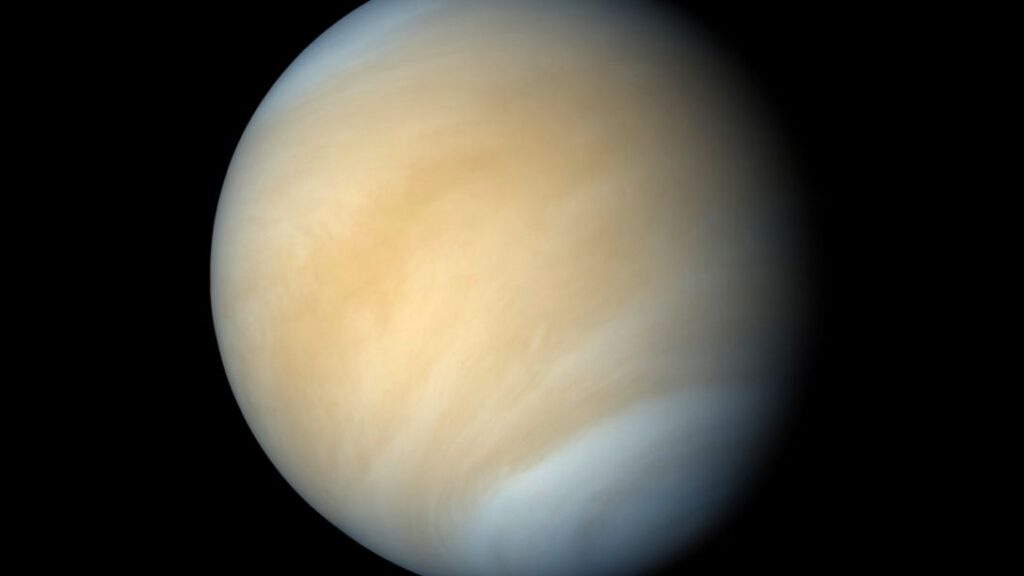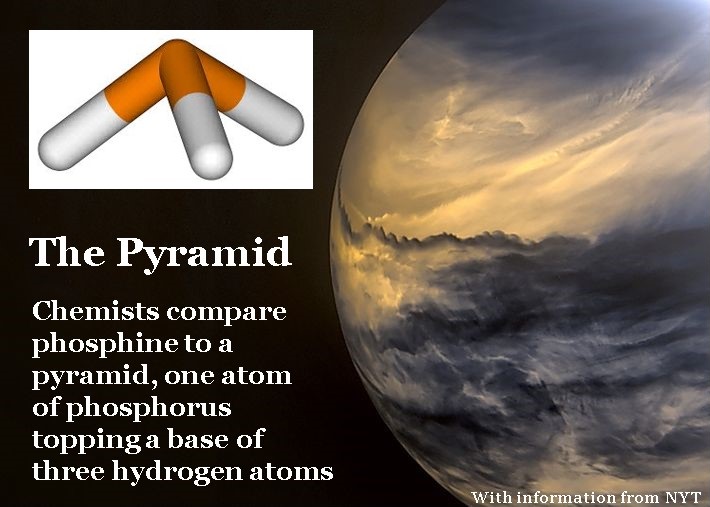Astronomers see a signal in the clouds of the “twin planet” of Earth The detection of a gas in the planet’s atmosphere could turn scientists’ gaze
Astronomers see a signal in the clouds of the “twin planet” of Earth
The detection of a gas in the planet’s atmosphere could turn scientists’ gaze to a planet long overlooked in the search for extraterrestrial life

Gto News presents extracts of a report posted at nasaspaceflight.com on the finding of elements that hint to the existence of life
With information taken from: Nasa Spaceflight.com
Let’s get the biggest point out of the way first: No, scientists did not announce proof of life on another planet.

The element
What they did find, however, is tantalizing in its potential meaning, though a great deal of work remains to rule out the possibility that other, unknown processes could be creating the phosphine signature detected in Venus’ atmosphere by a team of international researchers using ground-based telescopes on Earth.
In short, it all comes down to the detection of phosphine in a temperate cloud layer of the Venusian atmosphere.
The phosphine signature, confirmed via independent observations from two telescopes on Earth, is certainly intriguing because the only natural way we know of for phosphine to form on terrestrial planets is as a byproduct of life.
The trick here is that we don’t actually know what specific lifeform it is on Earth that produces the phosphine found in our swamps and marshes. It is believed to be microbiotic, potentially E. coli. But even with in situ research literally in the environment where phosphine is being created naturally on Earth, we still don’t know what causes it.
And that largely complicates the nature of the discovery announced by Professor Jane Greaves and her team.

Cautious and skeptical
While many have been quick to highlight and publicize the possibility of this being life, scientists on the other hand are far more skeptical and cautious, offering microbial life as a potential answer to this question only after all abiotic processes of phosphine production have been ruled out — which they have not.
In fact, life might not even factor into this discovery at all.
But that’s not headline catching.
Now, yes.
This discovery could indicate the presence of microbial life. But there could be many other reasons why phosphine is in Venus’ atmosphere.
In making the announcement, Dr. William Bains explained how his part of the team considered other forms of abiologic phosphine production (photochemical, thermodynamic, and rock chemistry).

Too much phosphine
While it was found that all of those processes are possible on Venus, they cannot account for the concentration of phosphine observed, which comes in at nearly 20 parts per billion.
In fact the team emphasized that the naturally occurring phosphine production processes on Venus are millions of times weaker than they would need to be in order to account for the amount of phosphine detected.
That would seemingly leave biological processes as the remaining option, but that is where Venus’ corrosive, sulfuric acid atmosphere adds another problem.
Venus’ atmosphere is filled with sulfuric acid, is thousands of times more acidic than battery acid, hundreds of times drier than the driest place on Earth, and destroys biological molecules within seconds.
A team of scientists led by Professor Greaves, conclude in their paper that “the presence of -phosphine – PH3- is unexplained after exhaustive study of steady-state chemistry and photochemical pathways, with no currently known abiotic production routes in Venus’ atmosphere, clouds, surface and subsurface, or from lightning, volcanic or meteoritic delivery.”

It was by chance
It all started when Professor Greaves read about a hypothetical scenario of an alien civilization trying to determine if life existed on Earth.
The paper -as others have as well- concluded that phosphine would likely be a definitive biosignature to prove the existence of life on Earth given that the only way phosphine is currently known to form naturally on terrestrial planets is as a byproduct of life.
Phosphine is also a relatively easy substance to detect in the 1.123 millimeter wavelength.
After more study, Professor Greaves and her team put together a model of where -based on current understanding of the Venusian atmosphere- one would expect to find concentrations of phosphine if they existed.
This modeling led to the conclusion that the phosphine would largely be concentrated in mid-latitude regions and mainly absent from the equatorial and polar areas of the planet.
Professor Greaves and her team then asked to use the James Clerk Maxwell Telescope (JCMT) in Hawai’i to search for the signature in Venus’ atmosphere.
The proposal was outright rejected. Nevertheless, Professor Greaves and her team persisted and got the decision overturned and secured observation blocks with the telescope.
Over five mornings in June 2017, the James Clerk Maxwell Telescope peered at Venus.

And there it was
The tell-tale signature of phosphine at the exact locations in Venus’ atmosphere where predicted.
Now the hard work began not only trying to determine where the phosphine came from based on its concentration levels but also in securing additional time on a more powerful and capable telescope to independently confirm the observation and collect improved data.
The team eventually secured time on the Atacama Large Millimeter/submillimeter Array (ALMA) in March 2019.
“The ALMA data confirmed the detection of absorption at the PH3 1–0 wavelength”, notes the team in their paper.
“The JCMT and ALMA whole-planet spectra agree in line velocity and width, and are consistent in line depth after taking into account ALMA’s spatial filtering,” the team states in their paper, a fancy way of saying “ALMA saw the same thing JCMT saw two years earlier.”
The possibility of a double false positive from the two observation platforms was considered and investigated but ultimately ruled out based on the spectral data returned from the two telescopes.
The investigating team points out that the mid-latitude circulation of Venus might provide a very stable environment for life, with circulations of roughly 70 to 90 days adequate enough for the reproduction of Earth-analog microbes.

Yes, but no
Basically, if it does turn out to be life producing the phosphine, conditions within certain parts of Venus’ atmosphere are conducive to such a process. But that absolutely should not be read as any confirmation that life has been detected.
The best and most effective way to prove the question is to send a spacecraft with dedicated instruments, ideally a spacecraft that could descend into the Venusian cloud layer and remain there for weeks or months.
No such missions are currently planned or announced, though a few missions to Venus are currently either under development or consideration, including an often talked about mission to Venus from Rocket Lab.
If this is life kit is far more probable that this would be life that developed naturally on Venus (again -huge caveat- if it is indeed life).
But that is the Holy Grail of space exploration, finding life that hasn’t been transported from Earth to another planet but that actually developed and evolved on its own.


COMMENTS